Recently on Quora (a question-and-answer website based in Mountain View, California, where questions are asked, answered, edited, and organized by its community of users in the form of opinions) that this question was asked: “What engine is nearly indestructible?”
The Citroën 2CV air cooled flat twin was legendary for its durability. Why?
Well, the 2CV twin was designed from the crankshaft up for durability and minimal maintenance. It was a minimalist engine, designed around the mantra that: “If it is not there, it cannot break.”
Of course, being air cooled, it lacked a radiator, or a water thermostat, or radiator hoses, or a fan belt. The cooling fan was driven directly off of the crankshaft. On the original models the generator was also driven off the shaft that powered the fan. Thus, there was no accessory belt to break.
But the concept of designing to eliminate problem prone parts went further than that. In that era cylinder head gasket failures were common. It is still a problem today, 70 years after the first post-war Citroën 2CV was sold. The 2CV engine solved this by eliminating cylinder head gaskets! On the 2CV the cylinder barrels and the heads were precision machined and lapped to fit with a gas tight seal without the need for gaskets. Moreover, as Ian Hunt reminded me, you did not have distributor problems on a 2CV. It did not have one! It used a “wasted spark” ignition and simply fired both cylinders when they were near TDC (top dead center) on either the compression or exhaust stroke. Again, what is not there cannot break.
The same concept was used for the crankcase sections. Precision machining eliminated the need for gaskets. In some ways this minimalist concept was taken to absurd extremes. I drove a Citroën 2CV in which the windshield wipers (which were in perfect condition) would stop completely when I idled at an intersection in the rain. Why? Citroen had carried minimalism so far as to eliminate the windshield wiper motor entirely by driving the wipers with the same flexible shaft that drove the speedometer! [Ed note: That is why Citroën also provided a knob on the dashboard to manually operate the driver’s windshield wiper when the car was stopped.]
Quirky car. I could tell 2CV stories until I ran out of digital ink. But Citroën’s concept of minimalism resulted in an engine that would run forever anywhere from Antarctica to the Sahara with minimal attention on whatever fuel was available. It was truly an indestructible engine.
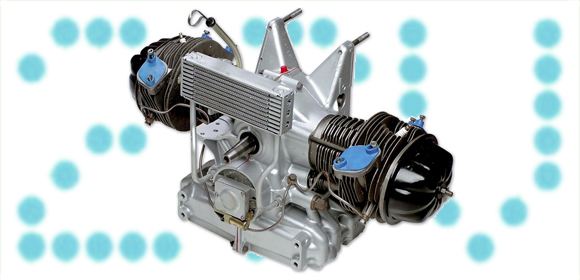
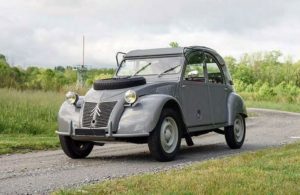
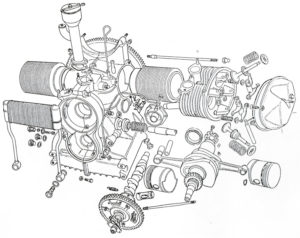
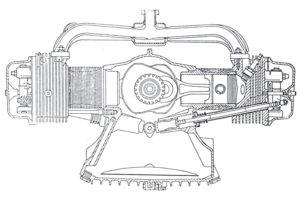
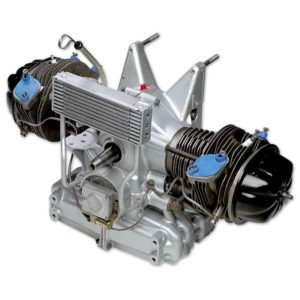

You still have the possibility of wear in the crankshaft and rod bearings, piston rings, barrels, valve seats, oil pump vanes, and valve guides. On an air cooled engine its important to warm up the engine before putting a load to it. This is something that owners forget to do which can cause wear on the little 2CV engine.
Is it true that prototype 2CV used BMW motorbike engine?, I have heard that even spares fit both…
ignorant rubbish, I’m afraid. I suspect the engine is closer to a Panhard twin…. it is TOTALLY different to a BMW engine. Nothing is remotely similar. The fact that they are both boxer twins is pure coincidence. I can name a dozen boxer twins in cars and bikes off the top of my head, and none are related to each other.
‘Ignorant’ seems a bit harsh.
Harsh indeed! The BMW engines can be fitted into 2CVs because of their similar configuration, so that’s probably where this came from. Prototype 2CVs were pre-war: I’m not sure when the BMW bike engine was first made.
trabant 2 cylinder engine is overengineered german failure, comparing with 2 cv engine…and trabant was absolutely unreliable, especially during 6 v existence as trabant 600.
The 2CV engine was designed by Mr. Porsche as a requirement to be released from prison during the WW1.
Yes, and Moby Dick was a minnow.
I stumbled upon this forum while searching for a cross section drawing of the 2CV engine to show to my grandson. Great site!
There are some misconceptions in the comments that deserves correction.
According to the book “2CV” by Adrienne Kessel and David Sparrow (Grange Books 1992, ISBN 1-85627-290-7) the first prototypes were fitted with 500cc BMW motorcycle engines. That engine was of course not used in the production model but may have inspired the final choice of an air cooled flat twin engine. Later prototypes had a water cooled 375cc flat twin engine designed by Maurice Sainturat. Walter Becchia later designed the air cooled engine that was used in the production car. It’s said that he made the drawings in three days!
I would also like to point out that as far as I know Ferdinand Porche had nothing to do with the design of the 2CV. But while imprisoned in France after WW2 he did some work on a small Renault car (4CV I think) that had a rear end engine and a rear suspension of a type that resembled the VW Beetle (the suspension that is, not the enging).
My first car was a 1961 12hp 2CV. It was bought new by my parents and used by my family for some years. Then it rested in our garage until I was old enough to drive it. I loved that car and did a lot of work on it but it did not fare well in the damp Norwegian climate. Rust finaly killed it. It was also very cold in winter but drove very well on snow. I agree that the engine is a work of genius, but to describe it as indestructible is perhaps to stretch a point. After 70000km my engine was rather tired. I changed the piston rings. That helped a little to reduce the high oil comsumption. It was still running after 100000km when I had to give up on the car, but was obviously rather worn. I think it suffered badly from the lack of an oil filter (not even a magnet in the sump plug). But that was not unusual at the time. The manual told to change oil every 2500km, which I did. I still keep the 12/14mm spanner from the tool kit as a memento. The 8/10mm is sadly lost. Those two spanners and a screwdriver was nearly all the tools needed to work on the car.
I’m not sure I will return to the forum, but please guys – keep your comments in a friendly tone. Not every one you disagree with or who brings information unknown to you is an idiot.